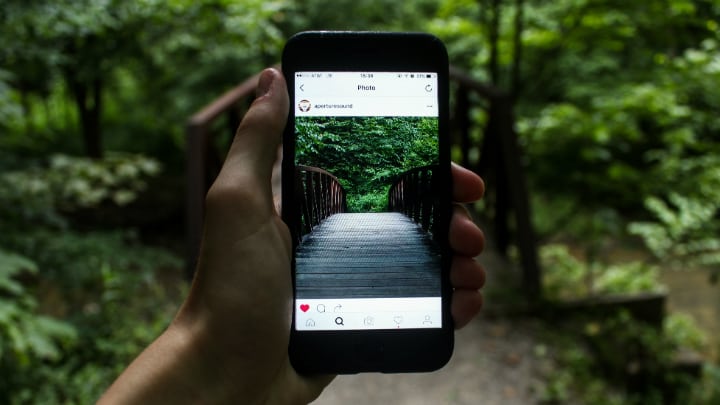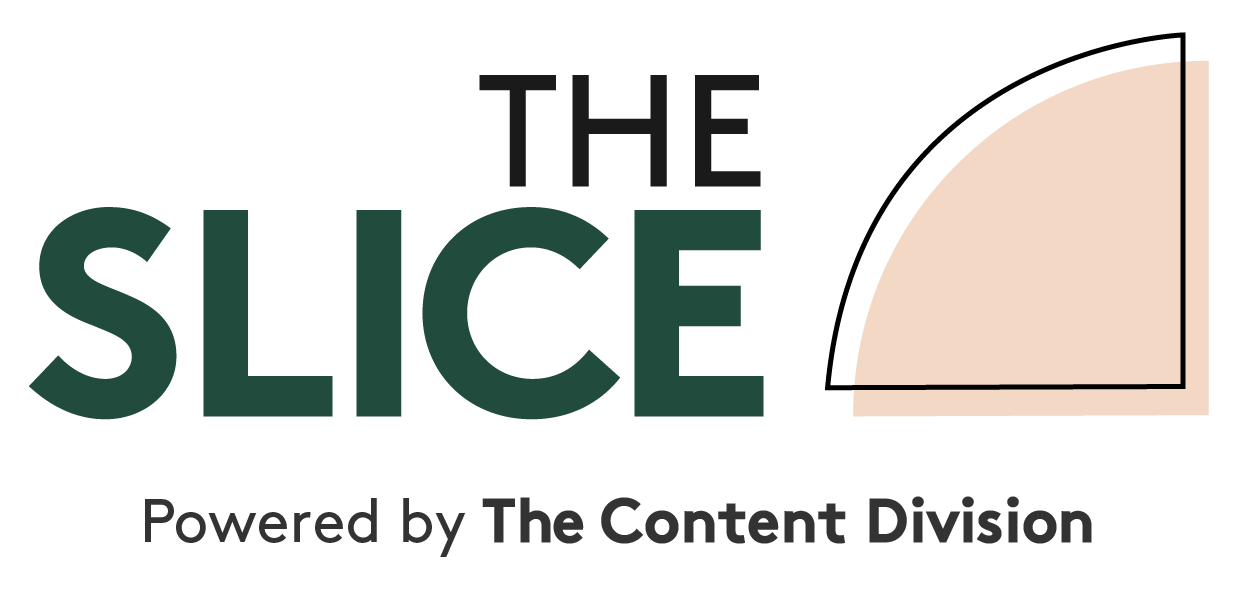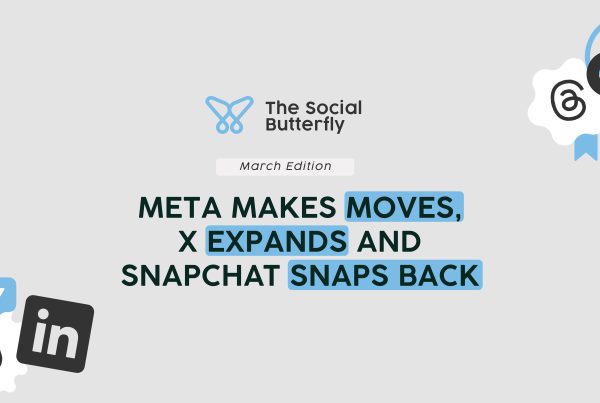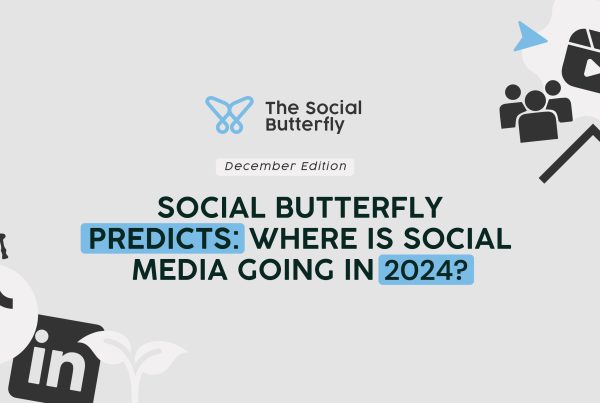
So you’ve spent the better part of half an hour crafting your social post. The link preview looks snazzy, the post copy is killer and there’s a few emojis smiling back at you for good measure. You schedule it to go out in prime time and sit back and wait to see the likes, comments and clicks roll in. But then it goes live, and nothing. After 30 minutes pass you’ve reached only 100 people and had just a handful of engagements. How can that be right when you have 5000 loyal page fans? Doesn’t that mean anything?
The answer is, unfortunately, no. And with social channels constantly updating algorithms and organic reach all but disappearing on the likes of Facebook, Instagram and LinkedIn, it seems paid posts are looking more and more appetising to ensure you hit your target audience.
But when it comes to paid promotion on social, is it taking away from the organic nature that is, well, social? To understand the need to promote (or not), we must first understand how social algorithms work today.
It’s all about relevance
We’ve used Facebook as an example because it’s the biggest social player in the digital ad market.
Facebook serves your posts based on how relevant it thinks it is to your audience. That means if the first few people who see it don’t click, it stops adding it to your fans’ news feeds. The opposite happens if the first few users engage with your post – more of your friends see it and their friends see it too.
This is applicable to paid content as well and is the reason why relevant and engaging content is actually cheaper per engagement than a more broad approach. Facebook gives paid posts a relevance score based on the interactions per number of people to whom the post is served.
More relevant posts reach more people. Siiiiimples.
And organic reach? Well, it sits around 6.5% depending on the post type. This is constantly changing and Facebook certainly values more content rich posts (like video, live video and link posts) than just a standard status update or image post.
Brian Boland, a representative for Facebook, explained the reason for this when he wrote: “There is now far more content being made than there is time to absorb it. On average, there are 1500 stories that could appear in a person’s News Feed each time they log on to Facebook.”
This number can get up to 15,000 for people with lots of friends and pages likes. So you see the need to stand out with your content or pay to appear in your audience’s news feeds.
Many articles about organic engagement rates will suggest ways of ‘outsmarting’ Facebook’s algorithm, but the best thing you can do is to only post fantastic, engaging content that people will want to interact with. If only it were that easy.
Boost ‘er up: Where and when
The quick and easy solution is to pop some cash behind your posts, choose your audience (keep it niche) and bid to appear in their news feeds. But do you really need to promote all of your posts? And if not, how do you decipher when to boost versus when to leave organic?
To answer these questions, we’ve asked some of Brisbane’s top digital marketing talent for their opinion on boosting social posts. Here’s their tips:
Mitch Wilson is the Digital Marketing Manager at Queensland Rugby League. He says he draws the line between organic and paid posts depending on whether the content is commercially focused or fan engagement driven.
“Storytelling posts, lifestyle content and game highlights are the types of posts we leave organic. We know they’re adding value for our audience and they’re quick to engage with the posts,” Mitch says.
“The types of posts we promote are around ticket sales, memberships, special offers and partner deals – a really clear difference in messaging and action for the audience.”
Mitch knows that if he’s posting the highlights of the previous night’s State of Origin match it’s going to go nuts organically, so he’s not going to waste marketing bucks promoting it. Memberships however don’t really shout “sharable content”, but it’s still a valuable message that’s relevant to his audience, so paid is the way to go.
Iain Calvert is the General Manager at Reload Media. He says businesses in 2017 have to pay to get coverage on social media.
“To understand the current situation with paid and organic social media marketing, we have to go back and understand the history of social media companies,” Iain says.
“Ten years ago social media networks were relatively new. As they were growing, they were backed by lots of venture capital dollars. Their goal was to build large customer bases. They did that, and they did that well – Facebook now has 1.6 billion users.
“Now social networks like Facebook have to make money, as many are publicly listed companies with shareholders who want returns, their number one revenue source is advertising. Depending on which source, the current reach of organic posts on Facebook is anywhere from 6-11%. That means if you post on Facebook and you have 1000 followers, between 60 and 110 people will see it. To get more people to see it, you need to pay through one of the many mechanisms, like boosting posts or ads. This drives the social companies’ revenue and keeps shareholders happy.
“The only stories that will get significant reach without paying are those that cover real game changing news. I’m talking, your social media account would need to break a story like ‘Donald Trump Officially Impeached’. This would be shocking enough (depending on your political view) that it would get huge engagement because the social networks would want others to see it.”
Iain is firmly of the view that, unless you’ve got game-changing content, paid is necessary to break through the clutter. It certainly seems to be looking that way – these are rented assets after all and social networks are businesses like any other media company. To get the best results when promoting your content, remember to keep your targeting niche and provide content of value for your audience.
Ashton Rigg is the Content and PR Manager at Youfoodz. She says that organic is the long-game – paid being a quick fix. Both have a role to play and it all comes back to your goal.
“The volume of content being produced these days is massive and key platforms have cottoned on to the fact they can make bank charging people to cut through the clutter,” Ashton says.
“Before you decide to put some spend behind your content, learn what your audience engages with organically. Use your budget wisely to promote content that already has organic traction, or to support a time-bound objective like boosting weekly sales.
“If your objective is to curate a long-term engaged community, go organic and think about leveraging the networks of like-minded social influencers. If it’s all about pushing those promotions, by all means jump in the fast lane with paid!”
If you ask me, that’s pretty solid advice. Personally, I like to boost posts when there’s a measurable action I want my fans to take. An example of that is an article or a blog post. I know that it will help or interest my audience, but it may not take off with the first few people who see it.
Daniel Klug is a Digital Marketing Planner at Liquid Interactive. He says that “a good digital strategy can have room for both paid and organic social”, depending on:
- The channels you’re using – some platforms lend themselves more to paid social than others, and similarly for organic.
- The audiences you’re trying to reach – paid social can give you access to sophisticated targeting metrics that aren’t available for organic content.
- Your business objectives – if you’re looking to scale up and expand your social channels, paid activity will allow you to do this more rapidly.
Daniel’s nailed it here. At the end of the day, whatever you’re doing has to support your business objectives somewhere along the line, so always come back to this when you’re wondering about the purpose and promotion of your posts.
Christina Jones is the Marketing and Communications Manager at QUT Creative Enterprise Australia. She says that when it comes to social promotion, brands need to embrace their human side.
“Social media is a worldwide phenomenon that has linked the masses; a perfect symphony of globalisation meeting interconnectedness,” Christina says.
“As humans we crave closeness – to understand, sympathise, empathise and to be heard. These are the basic needs that drive us and the basic needs that every marketer relies on to push their product.
“That same symphony should be echoed across your social media strategies. You need a mix of organic and truthful material that shows your corporate personalities – the things that make your people and business unique; and you need the paid side to reach further channels to compel the human condition to connect with you.
“It should never be 100% paid or organic. Both are needed to balance the values of each and every company and the people that support it.”
Cristina’s message is super important in an ever growing digital world. Your brand needs to have a face and not just one compelling message, but a story behind it which connects to people on a deeper level.





